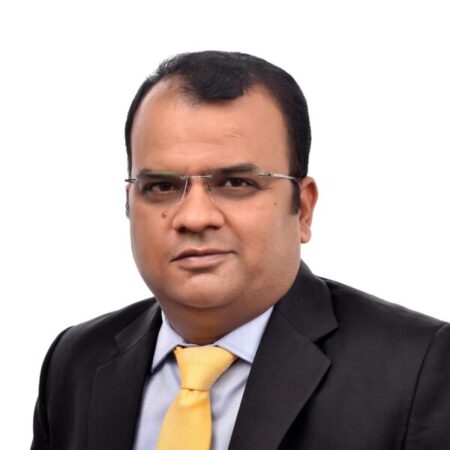Section 192 of Income Tax Act – TDS on Salary Section
Applicability of TDS under Section 192
Any person responsible for paying any income chargeable under the head “Salaries” (hereinafter referred to as, “the Employer”) shall at the time of payment, deduct tax at source on the amount payable at the average rate of income-tax computed on the basis of the rates in force for the FY in which the payment is made on the estimated income of the assessee under this head for that FY. [Section 192(1)]
Note :
- The person responsible for making the payment of salary may, at the time of making any deduction, increase or reduce the amount to be deducted for the purpose of adjusting any previous excess deduction or deficiency. [Section 192(3)]
- The Following points should keep in mind by the person responsible to paying salary, at the time of deducting tax at source:
-
- Average rate of Income tax means : Income tax calculated on total income/Total income
- Employer should consider the amount deductible u/s 80C, 80CCC, 80CCD, 80CCG, 80D, 80DD, 80DDB, 80E, 80EE, 80GG, 80GGA, 80TTA & 80U.
- The deduction in respect of donation given by the employee to a notified public charitable institute, shall not be given by employer. Tax relief in respect of such donation admissible u/s 80G will have to be claimed by the employee at the time of finalization of assessment.
Tax liability
-
- Rate of Tax : Income Tax has to be calculated at the average rate of income tax has Tax is deductible at the rate applicable for the relevant FY.
- If the employee does not have PAN, tax is deductible at the rate:
- Normal rate;
- 20% .
whichever is higher.
-
- However, if the estimated salary of an employee does not exceed the maximum amount not chargeable to tax, tax shall not be deductible.
- Lower withholding Certificate: The employee may obtain lower withholding certificate, by submitting application u/s 197 in Form No. 13 to the AO.
- Employer shall issue TDS certificate in Form No. 16 shall be given to the employee annually on or before May 31 of succeeding FY.
Payment of tax on non-monetary perquisites (without deduction) – Section 192(1A) & 192(1B) :
The person responsible for paying any income in the nature of a perquisite which is not provided for by way of monetary payment, referred to in section 17(2), may pay at his option, tax on the whole or part of such income without making any deduction therefrom at the time when such tax was otherwise deductible under the provisions of section 192(1). [Section 192(1A)]
For this purpose, tax shall be determined at the average of income-tax computed on the basis of the rates in force for the FY, on the income chargeable under the head “Salaries” (including the income referred above), and the tax so payable shall be construed as if it were, a tax deductible at source, from the income under the head “Salaries”. [Section 192(1B)]
Person is employed by two or more employers – Section 192(2) :
Where a person is employed by 2 or more employers during the FY :
- In such a case, employee may furnish to one of the said employers, the details of salary due or received from the other employers and tax deducted thereon, in Form No. 12B.
- Employer to whom the Form No. 12B is submitted shall take into account the details so furnished and deduct tax on the basis of aggregate salary. [Section 192(2)]
Relief under section 89 – Section 192(2A) :
In respect of salary payment made to employees of Government, Company, co-operative society, local authority, university, institutions, association or body, deduction of tax at source should be made after allowing relief u/s 89(1), if eligible. Employee shall submit the prescribed information in Form No. 10E to the employer, to avail the above benefit. [Section 192(2A)]
Furnishing of particulars of other income of employee – Section 192(2B) :
Employee may submit to the employer, the details of his other incomes chargeable to tax for that FY.
The following may send to the employer:
- details of such other income and tax deducted thereon;
- loss under the head “Income from House Property” (not any other loss).
The employer shall take into account the above particulars while calculating tax deductible at source. [Section 192(2B)]
Note : Only loss under the head “Income from House Property” shall take into account by the employer (not any other loss).
Furnishing of statement of particulars of profits in lieu of salary by employer to employee – Section 192(2C) :
Employer shall furnish to the employee, a statement giving correct and complete particulars of perquisites or profits in lieu of salary provided to him and the value thereof in Form 12BA. [Section 192(2C)]
Form No. 12BA (including the nature and the value of perquisite) is to be provided by the employer to employee if salary exceeds Rs. 1,50,000. The information shall be provided in Form No. 16, in other cases.
Requirement to obtained supporting evidence for HRA/ LTC/ Interest on home loan/ deductions under Chapter VI-A – Section 192(2D) and Rule 26 : –
The person responsible for paying any income chargeable under the head “salaries” shall, obtain from the assesse, the evidence or proof or particulars of prescribed claims (including claim for set-off of loss) under the provisions of the Act in the prescribed form and manner, for the purposes of :
- estimating income of the assessee ; or
- computing tax deductible thereon. [Section 192(2D)]
Rule 26 has been inserted w.e.f. June 1, 2016. According to this rule, an employee for the purpose of estimation of his income and tax deduction at source, shall require to furnish the supporting evidence in respect of the following in Form No. 12BB to the employer:
| S. No. | Nature of claim | Evidence/ Particulars |
| 1 | House Rent Allowance |
|
| 2 | Leave travel concessions or assistance | Amount and evidence of expenditure |
| 3 | Deduction of interest on borrowing under the head “Income from House Property” |
|
| 4 | Deduction under Chapter VI-A | Amount and evidence of expenditure or investment. |
Salary Paid in Foreign Currency – Section 192(6) and Rule 26 :
For the purpose of deduction of tax on salary payable in foreign currency, the value of salaries in terms of rupees shall be calculated at the “telegraphic transfer buying rate” of such currency as on the date on which tax is required to be deducted – [Section 192(6) and Rule 26]
Deduction of tax deduction at source from pre-mature withdrawal from employees provident fund – Section 192A :
Recognized Provident Fund (RPF) :
Under the Employee Provident Fund and Miscellaneous Provisions Act, 1952 (EPF & MP Act, 1952), certain specified employers are required to comply with the Employees Provident Fund Scheme, 1952 (EPFS). In this scheme, Provident Fund (PF) is managed by the Provident Fund Commissioner and PF contributions of the employer and employees are transferred to the provident Fund Commissioner. Employees get payment from the trustee of Employees Provident Fund Scheme (EPFS), at the time of retirement.
Employers are also permitted to establish and manage their own private provident fund scheme (PPFS) subject to conditions given u/s 17 of EPF & MP Act, 1952. In this scheme, a provident fund trust is created by the employer and employees. Provident fund is managed by the trust and employees get payment from provident fund trust, at the time of retirement.
The provident funds established under a scheme framed under EPF & MP Act, 1952 or provident fund exempted u/s 17 of the said Act and recognized under Part A of the Fourth Schedule to the IT Act, 1961 are known as recognized provident fund (RPF).
- Pre-mature withdrawal from employees provident fund at the time of retirement or at the time of leaving job :
- In the following situations, the withdrawal of accumulated balance by an employee from the RPF is exempt in the hands of employee – Rule 8 of Part A to the Fourth Schedule :
- Employees have rendered continuous service with his employer for a period of 5 years or more;
- Entire balance of PF standing to the credit of the employee is transferred to his account under a NPS referred to in section 80CCD.
- Employee has been terminated because of certain reason which are beyond his control (e.g. ill health of the employee, completion of project for which the employee was employed, discontinuation of business by employer etc.)
- Employee has resigned before completion of 5 years but joined to the another employer who maintains RPF and PF amount with the current employer is transferred to the new employer.
Note : –
- For the purpose of calculating 5-year time limit, service rendered with the previous employer shall be included, if the previous employer also maintained recognized provident fund and the balance of provident fund of the employee was transferred to the current employer.
- In case, employees make withdrawal before continuous service of 5 years (other than the above cases), such withdrawal shall be treated as withdrawal from Unrecognized Provident Fund (UPF). UPF withdrawal (Employer’s contribution) is taxable (hereinafter referred to as “premature withdrawal”).
Rule 9 of Part A of the Schedule IV provides the manner of computation for determining tax liability of the employees in respect of such pre-mature withdrawal. Rule 10 of Part A of the Schedule IV provides that the trustees of the RPF, shall deduct tax, at the time of payment.
Rule 9 provides that the tax on withdrawal amount is required to be calculated by re-computing the tax liability of the years for which the contribution to RPF has been made.
Applicability and Rate of TDS u/s 192A :
Tax is deductible;
from accumulated lump sum payment (“taxable premature withdrawal”);
at the time of retirement or leaving job;
in case the employee has not rendered continuous service of 5 years; and
he does not fall in any of the above 4 cases;
at the rate of 10% of taxable pre-mature withdrawals.
Note :
- In case of recipient is non-resident, the rate of 10% will be increased by surcharge (if applicable) and health and education cess.
- Only amount includible in the total income of the employee is subject to tax deduction at source, out of lump sum payment.
- If the PAN of the recipient is not available, tax is deductible at the maximum marginal rate of tax (i.e. at 35.88 % for the FY 2018-19).
Time of tax deduction at source :
Tax shall be deducted at the time of payment of accumulated balance due to the employee.
Who is deductor :
Tax is to be deducted by the trustees of Employees Provident Scheme, 1952 or any other person authorized under the scheme to make payment of accumulated sum to employees. Section 192A is not applicable, if payment is made by trustees of PPFS.
Non-applicability of TDS u/s 192A :
No tax deduction is to be made if “taxable premature withdrawals” is less than Rs. 50,000.
Declaration by an employee in Form No. 15G/ Form No. 15H :
An employee can submit a declaration in Form No. 15G (Form No. 15H in case of senior citizen) to the effect that his total income including taxable premature withdrawal from provident fund does not exceed the maximum amount not chargeable to tax and on furnishing of such declaration, no tax will be deducted.
Lower withholding certificate u/s 197 :
Lower withholding certificate cannot be obtained to get payment without deducting TDS or with lower TDS by submitting Form No. 13 to the AO, since section 197 has not been amended.
of income tax act
TDS Sections
- Section 193 of Income tax act
- Section 194 of Income tax act
- Section 194B of Income tax act
- Section 194C of Income tax act
- Section194EE of Income tax act
- Section 194H of Income tax act
- Section 194I of Income tax act
- Section 194IA of Income tax act
- Section 194 J of Income tax act
- Section 194K of Income tax act
- Section 194LD of Income tax act
- Section 194LBB of Income tax act
- Section 194M of Income tax act
- Section 194N of Income tax act
- Section 194O of Income tax act
- Section 194Q of Income tax act
- Section 194R of Income tax act



